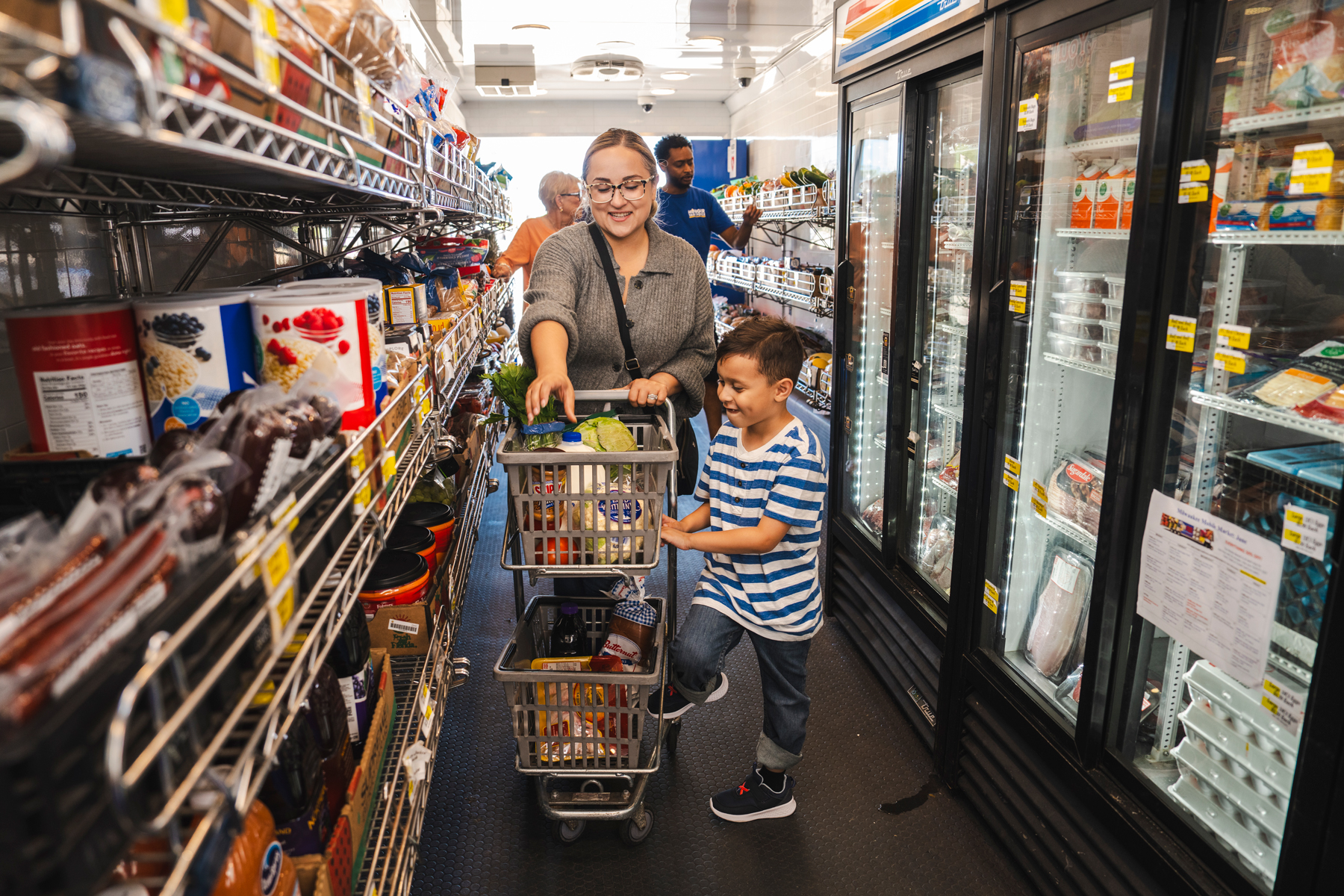Growing US consumption of ultra-processed foods raises concerns about health harms
In the past three decades, rates of Type 2 diabetes, hypertension and other chronic diseases have surged. There are multiple reasons for the increases, but one possible contributor is especially concerning to nutritionists: growth in ultra-processed foods consumption.
“As a nation, we’re sick because of our food,” Jerold Mande, MPH, an adjunct professor of nutrition at Harvard T.H. Chan School of Public Health and CEO of Nourish Science, told The Nation’s Health. “We have shorter lifespans than any of the other wealthy countries in the world.”
Ultra-processed foods are made with industrially manufactured ingredients extracted from food, such as added sugar and hydrogenated fats. The foods — which include cereal, lunch meats, packaged bread, frozen dinners and a plethora of snacks — make up over half of the calories consumed in the U.S., according to a December study in the Journal of Nutrition.
The key difference between ultra-processed foods and minimally processed or unprocessed foods often lies in the ingredient list. Foods that are minimally processed or unprocessed typically have short ingredient lists, featuring simple, recognizable items. In contrast, ultra-processed foods contain additives such as flavor enhancers, stabilizers, emulsifiers, thickeners and artificial sweeteners.
American consumption of ultra-processed foods has risen overall, with most people eating at least one packaged or pre-made food with every meal. However, certain people are more likely to consume the foods
One such group is Americans with lower education levels. Ultra-processed foods make up 57% of the caloric intake for high school graduates and people with some college education, compared to 49% people with a college degree, a 2021 study in Current Developments in Nutrition found.
The study also found that caloric intake from ultra-processed foods consumed outside the home, such as fast food, increased by eight percentage points for people without a high school diploma, rising from 59% in 2003 to 67% in 2018.
Americans with low incomes are also more likely to consume ultra-processed foods. People with low food security consume nearly 6% more ultra-processed foods compared to those with high food security, a 2022 study in the American Journal of Clinical Nutrition reported.
Low-income households tend to buy less nutritious foods, such as sugar-sweetened beverages and frozen desserts, instead of fruits and vegetables, compared to high-income households, a 2019 study in BMC Public Health found. Some research suggests that parents may base their food choices on a product’s shelf-life and their children’s willingness to eat it, which may lead them to choose ultra-processed foods over fresh produce and whole foods.
Certain ultra-processed foods, such as flavored yogurts and whole-grain breads, can offer nutritional benefits such as protein and fiber. However, many processed foods contain high levels of fat, sugar and salt, which contribute to poorer health when consumed in excess.
Eating ultra-processed foods is linked to 32 different health issues, including heart disease-related deaths, Type 2 diabetes and mental health disorders such as anxiety and depression, according to a meta-analysis published in The BMJ last year.

Despite the growing evidence associating the products with health risks, there has been no formal federal guidance on limiting consumption of ultra-processed foods. The U.S. Department of Agriculture’s Dietary Guidelines Advisory Committee opted not to provide recommendations on the foods in its December scientific report, citing an unclear definition of the products.
The advisory committee is now working toward a systemic review that will explore the relationship between ultra-processed food consumption and growth, body composition and obesity risk. The findings may shape future recommendations.
Among those who could benefit are the almost 20% of Americans who USDA says live in areas with low food access. The regions lack key resources such as supermarkets, grocery stores or other local outlets that sell fresh produce and whole foods.
In areas where options are limited, dollar stores are becoming the main source for groceries. Between 2008 and 2020, grocery spending at such stores increased by nearly 90%, according to a 2023 study in APHA’s American Journal of Public Health.
One leading company, Dollar General, has started offering fresh produce in 5,000 of its stores. However, in about three-quarters of its locations, the selection is limited to ultra-processed foods, canned goods and a small variety of whole foods.
People in rural areas also often shop at big-box stores such as Walmart or Target, which offer groceries in their larger locations. But those stores also stock a high volume of processed foods. According to a preprint study posted last year in medRxiv, prevalence of ultra-processed food in those stores was as much as 42% higher than in Whole Foods, a market that bans products with hydrogenated fats, high-fructose corn syrup and some artificial sweeteners.
In Mississippi, 79% of the state’s counties are considered to be rural, with only one city in the state that has more than 100,000 people. The state has one of the nation’s highest food insecurity rates and access to affordable nutritious food is limited.
“One of the problems we’ve seen, even though there may be a grocery store, is that the costs are too high where people can’t afford it,” Jacinda Roach, PhD, RD, LD, program director at the Mississippi Health Institute and nutrition chair of the Mississippi Public Health Association, told The Nation’s Health.
When food insecurity spiked at the start of the COVID-19 pandemic, Roach helped organize food distribution drive-thrus along the Mississippi Gulf Coast, primarily aimed at supporting low-income families and older adults, that offered fresh produce and other essentials.
Lack of access to healthy food is worsening public health in Mississippi, Roach said. As more people rely on dollar and convenience stores to meet their dietary needs, the gap in health outcomes between those with access to nutritious food and those without continues to grow.
“It greatly contributes to further health inequities, because regardless of the fact of there being a grocery store in a community, if they don’t have the money to buy the food, what are they going to do?” Roach said.
Programs working to deliver healthy food
Some nutrition advocates are stepping up to improve access to nutritious food in low-income communities. In Milwaukee, the Hunger Task Force is tackling the issue head-on by bringing grocery stores directly to neighborhoods with high food insecurity, also known as food deserts, through its mobile market.
“We characterize food deserts by a few things: a low-income population or population living below the poverty line, limited transportation and access to healthy and affordable food,” Hunger Task Force CEO Matt King, MBA, told The Nation’s Health.
Almost 20% of adults and over a quarter of children in Milwaukee live below the city poverty line, with food insecurity rates above the national average.
The mobile market — which partners with Piggly Wiggly, a supermarket chain with stores in Wisconsin — is stocked with fruits, vegetables, milk, cheese, yogurt and meat. To increase uptake of fresh produce and whole foods, the van does not sell ultra-processed foods.
“People are just really grateful for the access and the ability to shop,” King said. “We strongly believe that there’s a dignity that comes along with choice. People appreciate being able to choose the items that are appropriate for their family, for their preferences, for their religion, culture, family, as it may be.”
The mobile market operates through the support of volunteers. Shoppers can purchase items at 25% off Piggly Wiggly’s retail price, thanks to community grants, sponsors and donations. The mobile market also accepts EBT benefits, which almost a third of customers used last year.
More recently, the Hunger Task Force established a partnership with DoorDash and is now delivering pre-packed food boxes directly to the doors of low-income older adults.
King said the mobile market is a model other communities and stores should consider implementing to boost access to nutritious food.
“This is a huge public health issue,” King said. “Access to healthy food is paramount to the priorities that communities across the country should be focused on.”
For more on the mobile market, visit www.HungerTaskForce.org/mobile-market.
